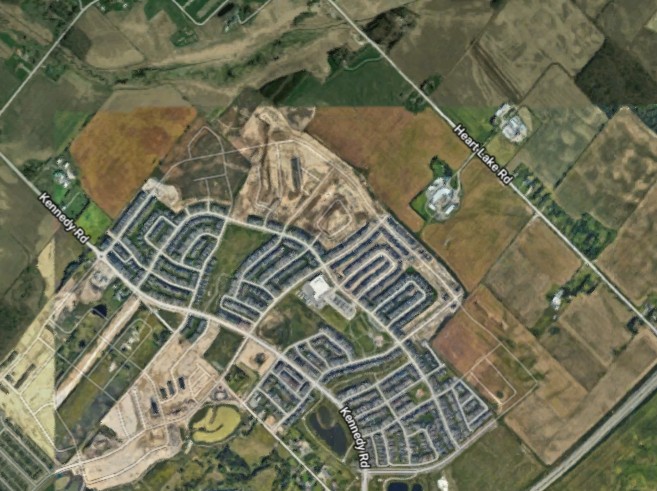
Ford has an ally in Caledon as the Ontario leader pushes pro-sprawl policies
Doug Ford has been called a lot of things during his first nine months in office as premier of the province, but the best way to describe him is “disruptor.”
Not to be mistaken with “disruption”, the savvy practice of those who turn aging conventions on their head while burnishing our world.
Anyone fixated on why and with whom Ford operates is likely distressed over his need to break things he doesn’t like.
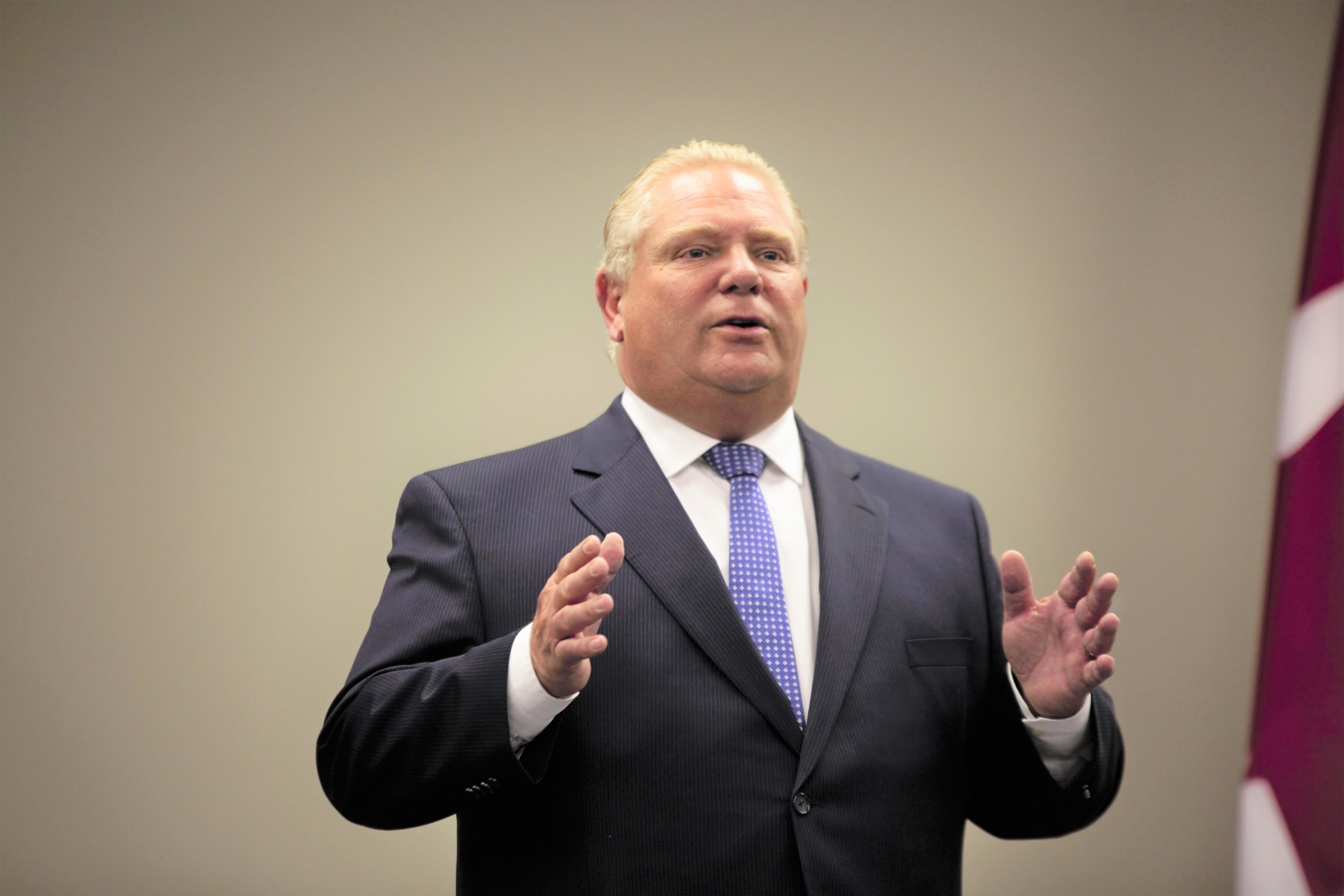
His political philosophy is that less government equals more opportunities for people just like him.
After all, he learned his business chops at the feet of his father who started up the Ford family labelling company.
In many ways, being enervated by excess and not having to worry about where your next meal might come from at an early age, puts him in the same category as another famous disruptor, named Donald Trump.
Both tapped their fathers’ business acumen to behold the rich benefits derived from profiteering. They have been taught well to use their power to re-right many of the wrongs that have been piled upon those who create the opportunities that elevate even the most unfortunate among us, while making the entire world a better place. In that vein, here are some of the good deeds Ford has done in his short time in office:
• Clawed back $90 million in promised investment for post-secondary expansion in Brampton.
• Watched his government launch a review of public education that could lead to deep cuts, ala Mike Harris, while expanding class sizes.
• Introduce Bill 66 (Restoring Ontario’s Competitiveness Act) and Schedule 10, that allows municipal governments to opt out of certain provisions in smart growth legislation preventing encroachment into protected lands (a backlash to his furtive move just as the legislature was shutting down ahead of the holiday break prompted claims to rethink Schedule 10).
• Moved on his Making Ontario Open for Business Act, which scraps certain protections for workers and puts the pause on further increases to the minimum wage.
• Oversaw the introduction of sweeping plans to overhaul the healthcare system, which critics fear could lead to the privatization of some services.
This all spins back to last June’s election when Ford was given a majority mandate with 40 percent of the vote. He didn’t think it necessary to tip off voters that he was about to slash Toronto city council in half, perhaps dump regional government, or pursue policies that threaten our eco-sensitive lands.
But we shouldn’t be surprised.
Just like the Access Hollywood tape that showed what Brand Trump was all about, Ford’s plans for governing over land use and growth in the province were exposed in a secret tape leaked during the campaign. He was delivering it to members of the building trade.
He privately assured developers he would “open a big chunk” of “the Greenbelt”, protected lands, to housing in the Greater Toronto and Hamilton Area if the Progressive Conservatives won the election. The video was shared with the media. In it, Ford said the 800,000-hectare swath of environmentally sensitive and agricultural land known as the Greenbelt is “just farmer fields.”
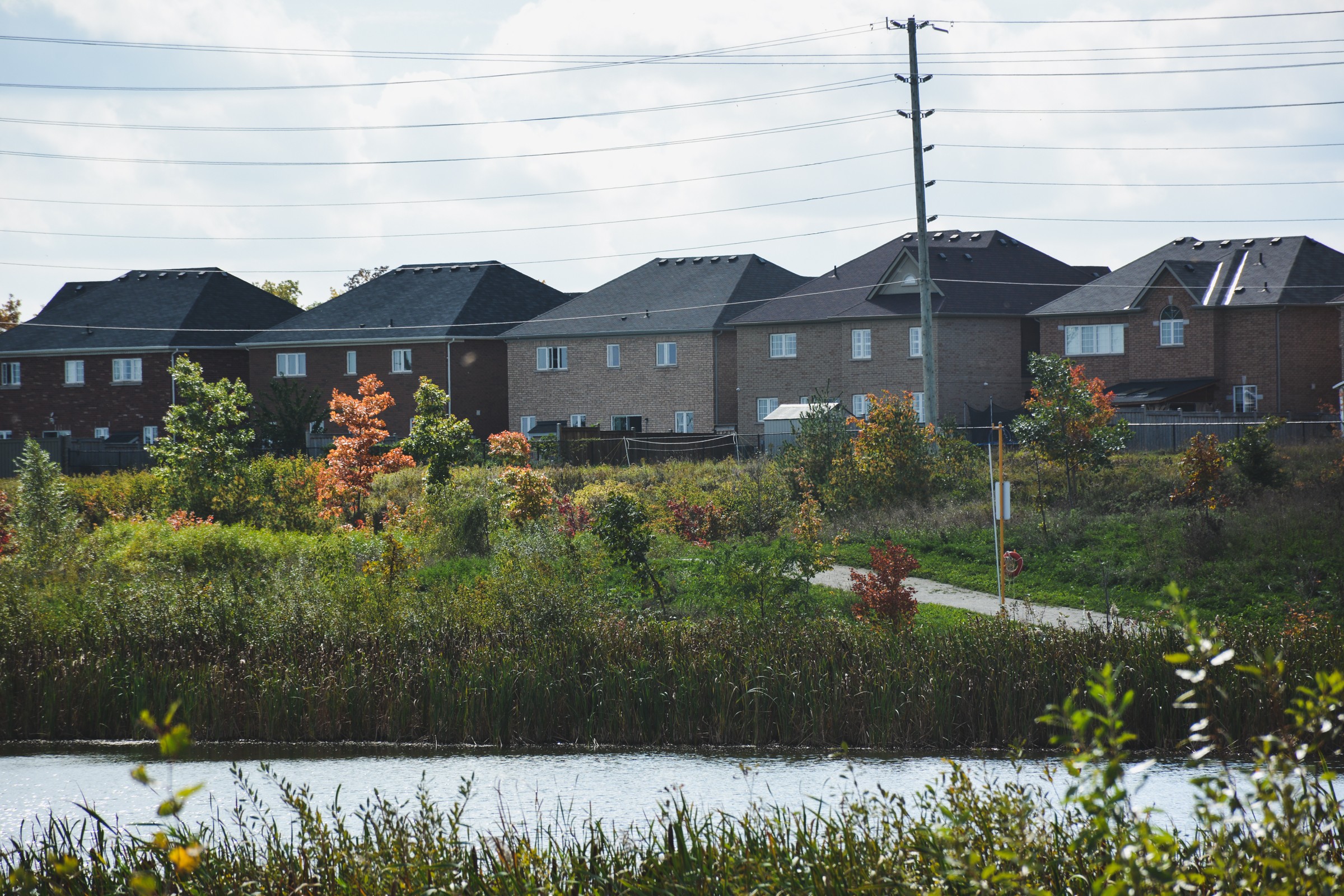
Like Trump, there is now no misunderstanding where he stands on key issues.
When it comes to serving the public in Ontario, the first in line for government largesse will be the developers, including many who give generously to Ford and the PCs during election time, under the rules of course.
One of Ford’s more quietly made moves could prove the most devastating, at least for anyone concerned about growth issues such as sprawl, chaotically bad traffic and rapid environmental degradation.
After almost a decade of carefully planned changes to the province’s growth policies, aimed at curtailing sprawl, getting people out of cars and turning around the decades-long war on Southern Ontario’s ecosystem, the previous government introduced a complement of legislative changes that increased density targets across the region, while protecting sensitive land and creating the blueprint for smart growth.
No surprise, though, that the disruptor wanted to break the plan, to benefit his magnanimous friends, including many in Caledon, where local politicians with close ties to the Conservatives are already heralding Ford’s return to bad planning that flies in the face of smart growth.
The race to intensification has hit a road bump – Ford and his PC government. As reported by The Pointer’s Joel Wittnebel last week, while the Liberals upped the ante, Ford now wants all the winnings for himself and his buddies. He is determined to expand the sprawl and continue choking us in traffic.
The Liberals had added even more layers to the growth plan in 2016, with legislation that constrained 60 percent of all new development within the existing built boundary in each municipality, preventing land-gobbling developers from more marauding across the region. That would accommodate at least 80 people and jobs per hectare, (a sizable jump from 50). While the changes proposed were significant, a report released by Ryerson University’s City Building Institute said it’s more than possible to meet these standards. Finding the Missing Middle in the GTHA would allow more people to work closer to home and use public transit more often. The report said there was enough available land in Peel to find space for over 400,000 new residents and meet the requirements for future growth.
But now, a new Ford plan will drop the goal from 80 to 60, and a review is underway of a past study, known as the Growth Plan for the Greater Golden Horseshoe. We all know what that means. Ford uses the word “review” the way Trump says, “you’re fired”.
The news of a return to the old sprawling ways seems particularly dire for Peel Region, and Brampton especially. We are a city caught in the middle of two jurisdictions (Mississauga and Caledon) that are eager to “disrupt” norms – with the full backing of Ford.
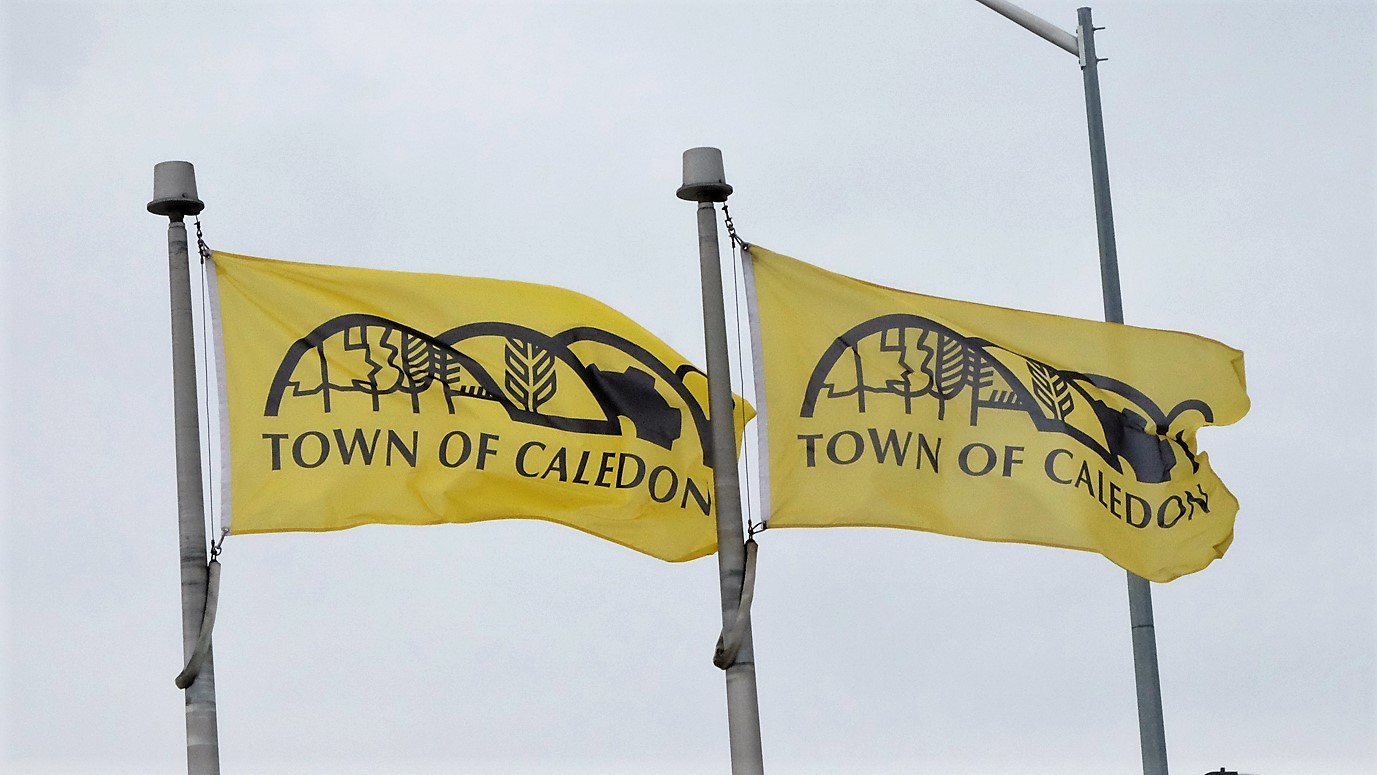
Mississauga has been in a head-long rush to leave Peel Region since Hazel McCallion was elected mayor in 1978. She said from the get-go that two-tier government was a waste, and why should Mississauga taxpayers pay for the future development of Brampton? What was perhaps more provocative was her take on the “gentleman farmers” in Caledon. McCallion found it galling that the snobby elites who owned vast acreages for hobby farms, weekend getaways on gated compounds and equestrian activities (in Caledon’s famed horsey country) had their services subsidized by Mississauga taxpayers. And why did a hamlet with a population that didn’t even match a ward in Mississauga, hold five seats of regional council? Brampton, with ten times Caledon’s population, has only seven seats. Talk about an abuse of the rules of governance, McCallion would thunder. She also thought two regional council meetings a month in Brampton, where the higher-tier local government is located, was two too much.
McCallion wanted a divorce.
When McCallion retired in 2014, she passed on her I-hate-the-region button to her successor Bonnie Crombie, who has estimated the cost to her city of regional partnership is upwards of $100 million.
Which brings us back to the election of Ford.
He, too, is a critic of two-tier government, or government in general. He has launched a ‘review’ of the regional government model (remember what that word means) after securing the backing of McCallion on his election team during the 2018 vote. The lifelong Liberal with a conservative bent pushed aside her support of Kathleen Wynne and joined the Ford team.
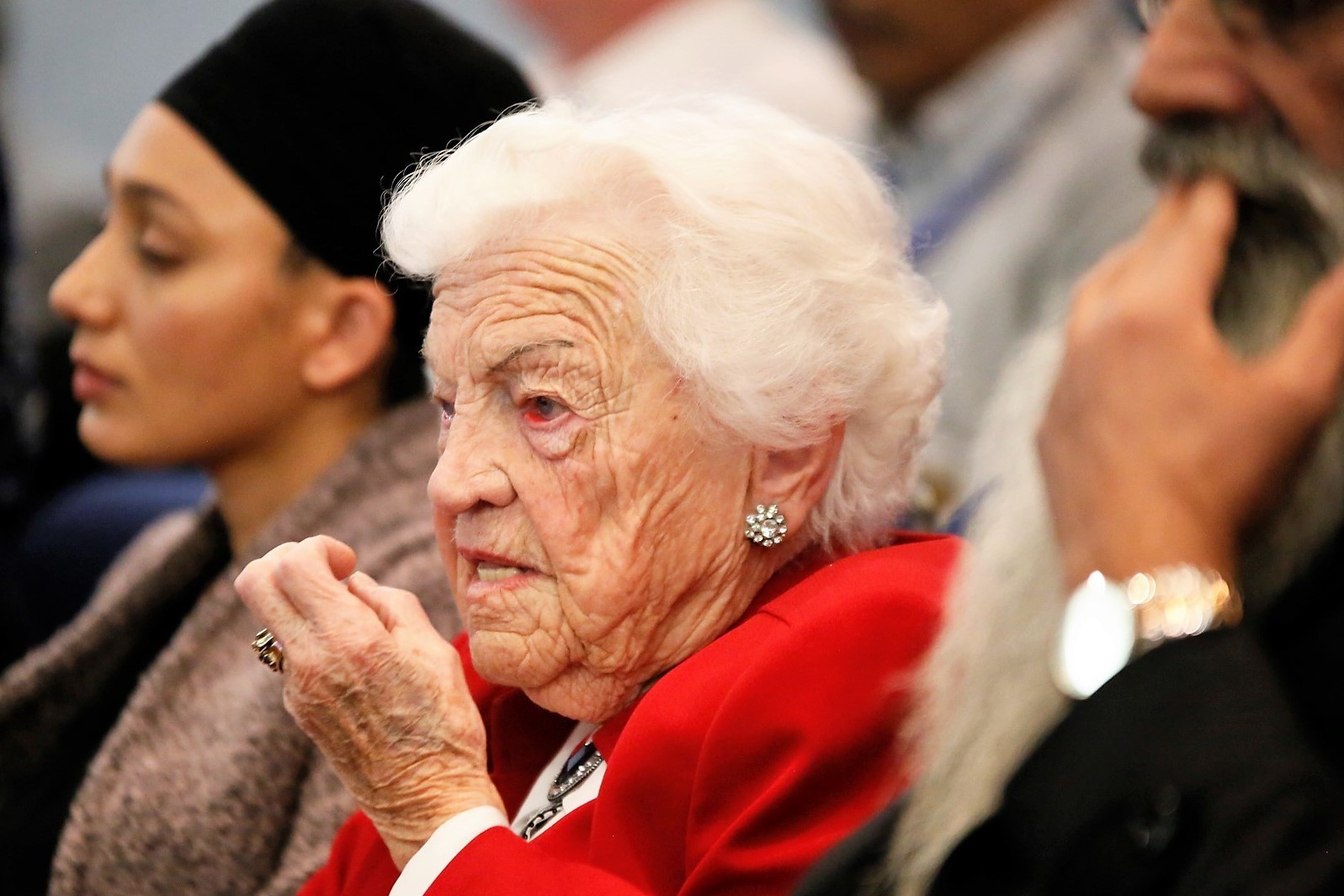
She said: “Doug is committed to fixing Ontario’s finances, creating jobs, improving healthcare and services, and getting our taxes and hydro bills under control.” Ford even offered her a $150,000 per-year advisory position in his government, which she later turned down.
It’s clear, the regional model that Brampton’s Progressive Conservative premier Bill Davis (1971-1985) brought in back in 1974 wasn’t cutting it with Ford and friends anymore.
The slicing of the Toronto council and his roadblock to a vote for regional chair are two glaring examples that it’s not business as usual in the province.
The big loser in all this might be Brampton, caught in a vice between two factions moving in lock-step with Ford, and running off in two different directions.
Mississauga is awaiting a green light to exit the region, and Caledon is seemingly all-in when it comes to supporting Ford’s most audacious plans for future development – the aforementioned Bill 66, and it’s hopes for poaching into the Greenbelt, its support of a new GTA West highway, cancelled by the Liberals and called a giveaway to developers by critics, and now the return to less dense growth that will ensure unnecessary land use, which Caledon is all in on.
Caledon council is spilling over with a pro-development team, including its Mayor, Allan Thompson, who has been at the centre of a power struggle on regional council since June of 2015. It has created much rancor.
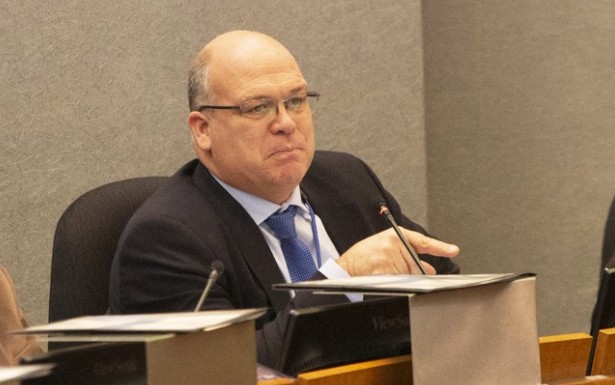
Caledon Mayor Allan Thompson
During a regional meeting that month, five Caledon councillors, led by Thompson, walked out rather than face a vote pushed on them by their neighbours to the south. It would have stripped the town of much of its authority over planning.
The motion on the floor died because of the walk-out before it could be voted on, and that spun the issue over to the province.
The issue was whether Caledon’s planning was way out of line with provincial legislation (which it was, as stated publicly by a Town of Caledon planner in 2012), and if Mississauga and Brampton were subsidizing this illogical business plan (which they were). The issue heated up when Mississauga Councillor Carolyn Parrish suggested Thompson’s desire to keep planning decisions in councils’ hands was motivated by his personal land interests. She mounted her assault after media reports revealed that property sales documents showed Thompson entered into a purchase agreement to sell family land to developer Primont Homes for $9.4 million, and that he had pushed development in an area near his family land, even though it’s in the sparsely populated southwest corner of the huge, sprawling rural municipality, the largest in the GTA, even bigger than Toronto.
The mayors of Mississauga (Bonnie Crombie) and Brampton (Linda Jeffrey) voted for the motion to curtail Caledon’s control over its own planning, as some members from their cities were growing increasingly frustrated with Caledon’s nonsensical growth, which has featured subdivisions approved for development even though next to no infrastructure had existed in and around the areas slated for growth. The crippling cost of running storm, water and wastewater infrastructure as well as services such as EMS and waste collection, out to these far flung developments is being subsidized by Mississauga and Brampton taxpayers.
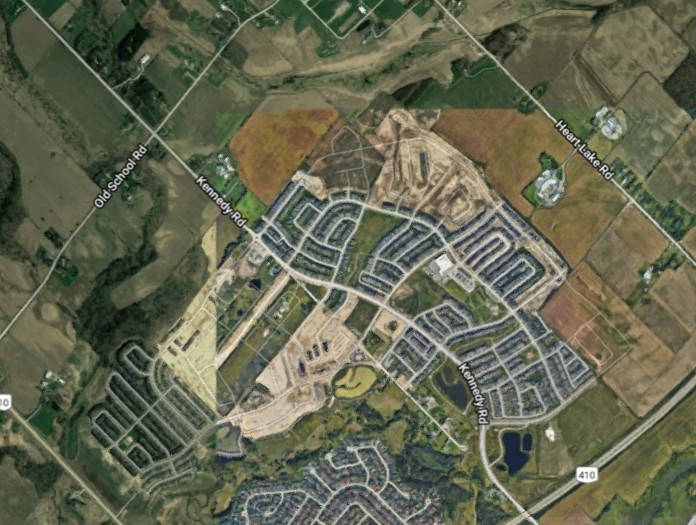
Meanwhile, property owners in Caledon are walking away with millions, as isolated subdivisions spring up on former farm lands. Questions have persisted over the motivation for this illogical, excessively expensive random approach to planning.
Former mayor Marolyn Morrison vehemently denied any conflict when one such development yielded millions for a close personal friend of hers, who had managed Morrison’s election campaign.
Thompson, who entered into the $9.4 million agreement with a developer for his family land, has called past attempts to curtail sprawl under the Liberal plan, “insanity”.
Caledon Councillor Jennifer Innis describes the subdivisions she wants under Ford’s new plan for less density, as “complete communities”. She recently said, when regional council debated the implications of moving away from the more dense targets aimed at curtailing sprawl, that her residents don’t want such intensification. The types of “complete communities” she heralded are the types many developers can’t wait to build.
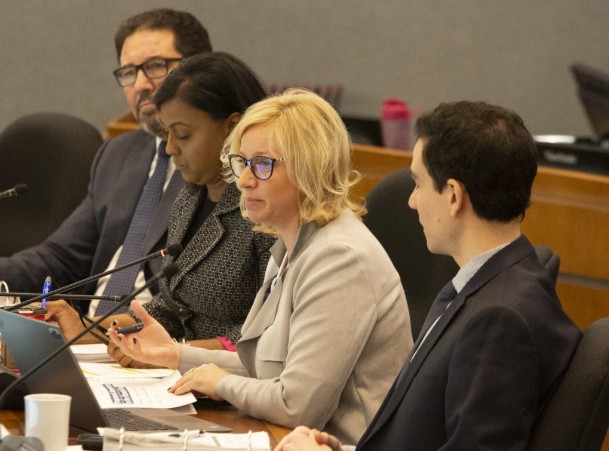
Caledon and Regional Councillor Jennifer Innis
At regional council Innis pushed to reduce the required amount of new development currently mandated inside the urban boundary. She and others from Caledon want the number to go down from 60 to 50 percent, so that half of the population increase can occur outside already built areas, which is the direction Caledon has been going in for years, approving subdivisions in the middle of nowhere, forcing the need for expensive infrastructure that’s paid for by taxpayers who cover the costs of building in areas surrounded by farmland. It’s a huge boon to developers, who can gobble up these properties then push growth onto them. That’s exactly what the province’s previous anti-sprawl policies intended to prevent, before the arrival of Ford.
Last month the Toronto Star reported that the board agency safeguarding the area’s watershed (the Toronto and Region Conservation Authority) had elected a new chairperson, Innis. This came after unusual behind-the-scenes lobbying, according to the Star’s reporting, including calls from a developer and a Progressive Conservative MPP. The lobbying came as the development industry told the Ford government that the coming “housing supply action plan” should end “mandate creep” – overstepping authority and stifling homebuilding – by TRCA, and Ontario’s 25 other conservation authorities.
Caledon’s questionable position on growth and planning issues is nothing new. In 2016, Parrish unveiled a motion at Mississauga council to seek city control of regional roads running through her city. The Mississauga News reported that Parrish thought the move would prevent “five little twerps from Caledon” from having a say in how Mississauga spends its money.” Parrish later put her motion before regional council.
While Parrish and McCallion often butted heads, they seemed simpatico about regional government and Caledon’s place in it. Before leaving office in 2014, the long-time mayor told Brampton Guardian reporter Peter Criscione: “Caledon doesn’t fit. It’s a rural area and should remain rural. Brampton and Mississauga can become independent cities.”
In mid-January of this year, Ford made his pitch to right-size local government, following up on a December announcement he made in Burlington. There was to be a sweeping review of grassroots governance to offer up better services and greater efficiencies with a rethink of regional government that he said was long overdue.
The main concerns of critics of regional review and new growth legislation that will largely impact planning in the booming 905 regions seem to be on the horizon, that an overhaul of the province’s growth plan would roll back density targets – and a return to the building of single-family homes. All of it throws into question the principles of compact and sustainable growth, and seems to say there’s a decided lack of developable land in the GTA – a concept widely refuted by groups such as the Neptis Foundation and Environmental Defence, which have done research that shows there is plenty of room for growth within existing urban boundaries, meaning further sprawl is easily avoidable.
This position was supported by Brampton mayor Patrick Brown, who also rejected pro-sprawl legislation in his inaugural address in early December. He said Brampton still has plenty of land for development and the days of creating a bedroom community with single-family dwellings was over. The city was reassessing its land-use options, he said.
The reality today is that 400,000 to 500,000 people will be moving to Peel region by 2040. What’s most striking is Ford’s new land-use initiative to lower density rates. It will only make sprawl and gridlock worse. But this seems to be what Caledon wants. The question is: why?
The proposed changes to Places to Grow legislation might result in this rural area – a collection of hamlets tied together into a town – being carpeted by subdivisions. That bumps up against regional planning which wants to encourage more density to lower infrastructure costs, encourage more transit use, ease gridlock, cut pollution and help elevate consciousness over climate change concerns.
As mentioned earlier, Caledon has been fried and fricasseed because of what others term haphazard planning – building projects far afield. This ups the cost of servicing, and the money has to come from somewhere, usually subsidized by the taxpayers in Mississauga and Brampton.
Innis wants to pull back on old density targets. Thompson is in sync and thinks intensification numbers in the recent past were “insane.”
A 2012 Ryerson University report agreed with regional worries that Caledon’s approach to growth was iffy at best and said its checkerboard plan of sprinkling subdivisions in places detached from existing infrastructure was not financially sustainable for Peel Region. The war over planning philosophies continues to impact Mississauga and Brampton which hold 95 percent of the region’s population and taxpayers, who continue to subsidize Caledon’s inexplicable planning.
The fact Caledon approves development in agricultural land with little existing growth around it, has caused a huge rift at the region, and this battle between jurisdictions has to stop, said a consultant brought to talk with regional councillors just over a week ago.
Innis thinks lower density targets can reach a reasonable balance between smart growth and what the community she represents (Caledon East) is asking for.
Caledon seems open and eager to Ford's developer-friendly mantra, and perhaps it will agree to tap into Schedule 10 (if it isn’t removed and Bill 66 passes) and turn over some of its protected land to developers.
The notion that all planning was driven by our politicians in the past, is misguided. Brampton and Mississauga served on a platter the opportunities to sprawl. They allowed developers to run the show for about three decades. They kept at it until Queen’s Park said no. Now, Doug Ford says, yes. He wants to go back to the way things were. As do his friends captured in the leaked video during last spring’s election campaign.
The GTA West Corridor, a future 400-series highway proposed to run through Caledon and south to Brampton before carving west to join the 401, would be another gift to developers.
The curious case of Caledon’s acceptance of development in its bucolic playpen, isn’t curious at all. It’s all about money.
When Morrison retired in 2014, she warned voters to watch the next regime closely when it came to opening up the doors to development. She didn’t want Caledon to become another Brampton, she said, referring to its crush of new residents over a short period of time.
But others have openly said the same thing, fearing a different dynamic of change. Questions of xenophobia and intolerance have long hung over Caledon’s resistance to dense, urban-style growth. With the population, inevitably comes new demographics and people who look different. It’s nothing new. It happened in Toronto, after the Second World War, when growth came with tensions between groups from different parts of the globe. It continues to happen in Brampton, and it has already started in parts of Caledon.
Thompson and his council’s haphazard development approach suits people with such attitudes just fine. Instead of dense growth in and around Bolton, Caledon’s only true urban area, where intensification has been recommended to spread from, sprawl allows people to stay away from anyone they don’t want to be around, like American-style gated communities.
Realtors pushing new homes in sprawling developments outside the GTA openly advertise services that will allow prospective buyers to find out the demographics of the subdivision before committing, so they can learn what their would-be neighbours look like, prior to any decisions.
The big losers in all of this are future generations – our children and their children.
Before iconic urbanist Jane Jacobs died in 2006, mere months after the Places to Grow legislation came into effect, and the Greenbelt lands were secured for the future, she wrote Dark Age Ahead. It was portentous, and her portrayal of what lay ahead wasn’t pretty. She reported glumly on the endless advance of asphalt, and said the total number of farms in Ontario declined 11.5 per cent between 1996 and 2002. In the Region of Peel, that figure was double (24 per cent). The money offered the gentleman farmers in the area to sell was obviously too good to turn down. Her worrying words seem even more prescient now as Ford and his development friends reverse government protections from the past. Caledon seems excited to assist with the coming assault.
Ford’s legacy in disrupting restrictive growth legislation will last long past his term in office. The land sharks are now circling in ever-smaller circles as families ready to turn over generational properties for sprawl and gridlock.
They can use (and abuse) them as Ford and his friends see fit.
Submit a correction about this story


